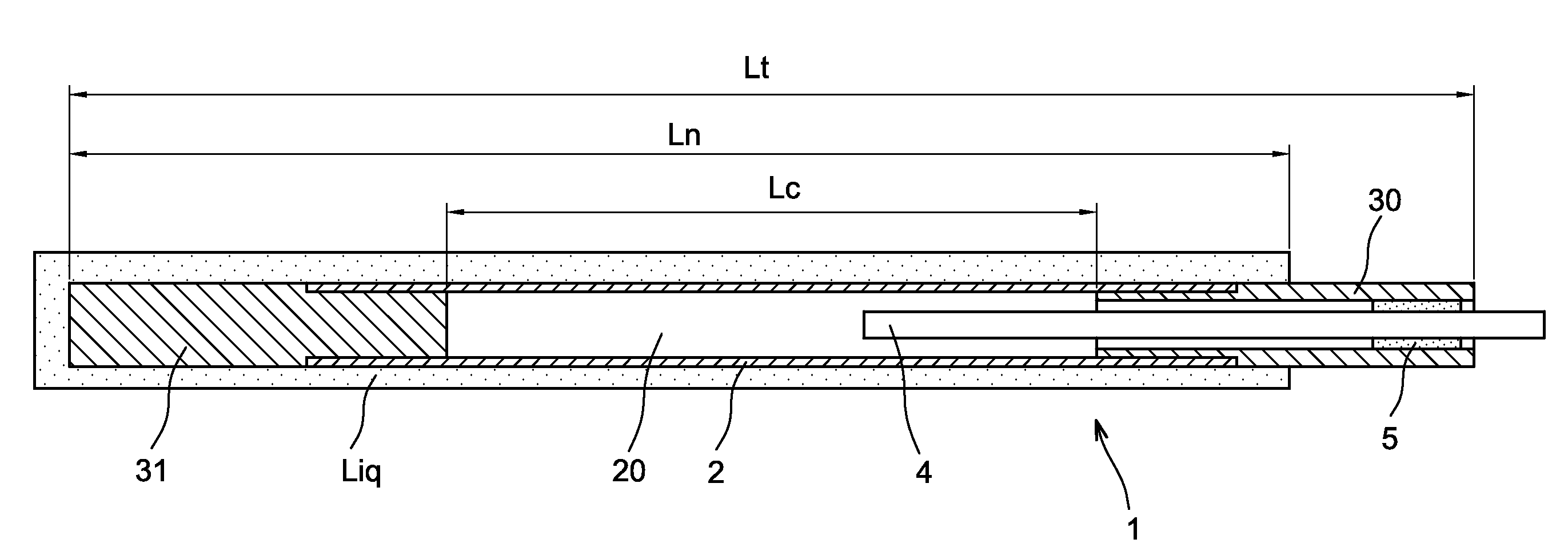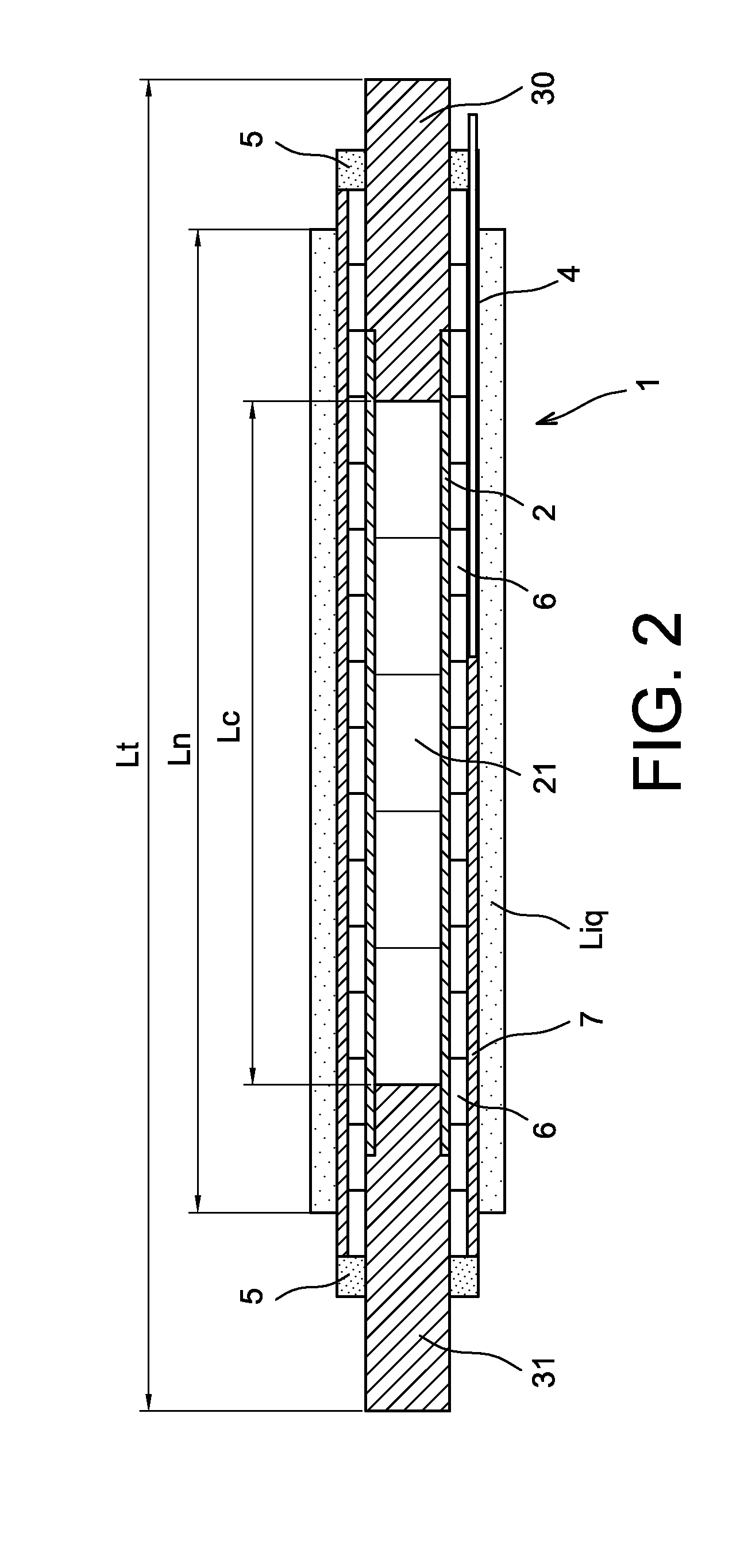Electrical Heating Device For Heating A Liquid, Method For Producing Same, And Use In The Electrical Simulation Of Nuclear Fuel Rods
a heating device and liquid technology, applied in the direction of ohmic resistance electrodes, heater elements, heating element materials, etc., can solve the problems of nuclear fuel rod sheath rupture, high thermal performance, and high thermal conduction. , to achieve the effect of reducing the thermal resistance of the interface and maximising the thermal conduction
- Summary
- Abstract
- Description
- Claims
- Application Information
AI Technical Summary
Benefits of technology
Problems solved by technology
Method used
Image
Examples
Embodiment Construction
[0066]It is stated here that the electrical simulation devices according to the prior art (FIG. 1) and according to the invention (FIGS. 2 and 3) must make it possible to detect the occurrence of the boiling crisis, defined as a significant excursion in wall temperature for a small variation in the thermohydraulic control parameters.
[0067]It is also stated that, in all of FIGS. 1 to 3, the reference Lt, Ln and Lc designate respectively:[0068]Lt: overall length of the device;[0069]Ln: length of the device immersed in the liquid;[0070]Lc: heating length of the device.
[0071]It should be noted that the mounting of the electrical simulation device according to the prior art (FIG. 1) makes provision for immersing and electrical connection whereas the mounting of the electrical simulation device according to the invention (FIGS. 2 and 3) makes it possible to not immerse any electrical connection, which is advantageous since it is not necessary to effect a sophisticated electrical insulatio...
PUM
| Property | Measurement | Unit |
|---|---|---|
| temperature | aaaaa | aaaaa |
| pressure | aaaaa | aaaaa |
| diameter | aaaaa | aaaaa |
Abstract
Description
Claims
Application Information
 Login to View More
Login to View More - R&D
- Intellectual Property
- Life Sciences
- Materials
- Tech Scout
- Unparalleled Data Quality
- Higher Quality Content
- 60% Fewer Hallucinations
Browse by: Latest US Patents, China's latest patents, Technical Efficacy Thesaurus, Application Domain, Technology Topic, Popular Technical Reports.
© 2025 PatSnap. All rights reserved.Legal|Privacy policy|Modern Slavery Act Transparency Statement|Sitemap|About US| Contact US: help@patsnap.com



